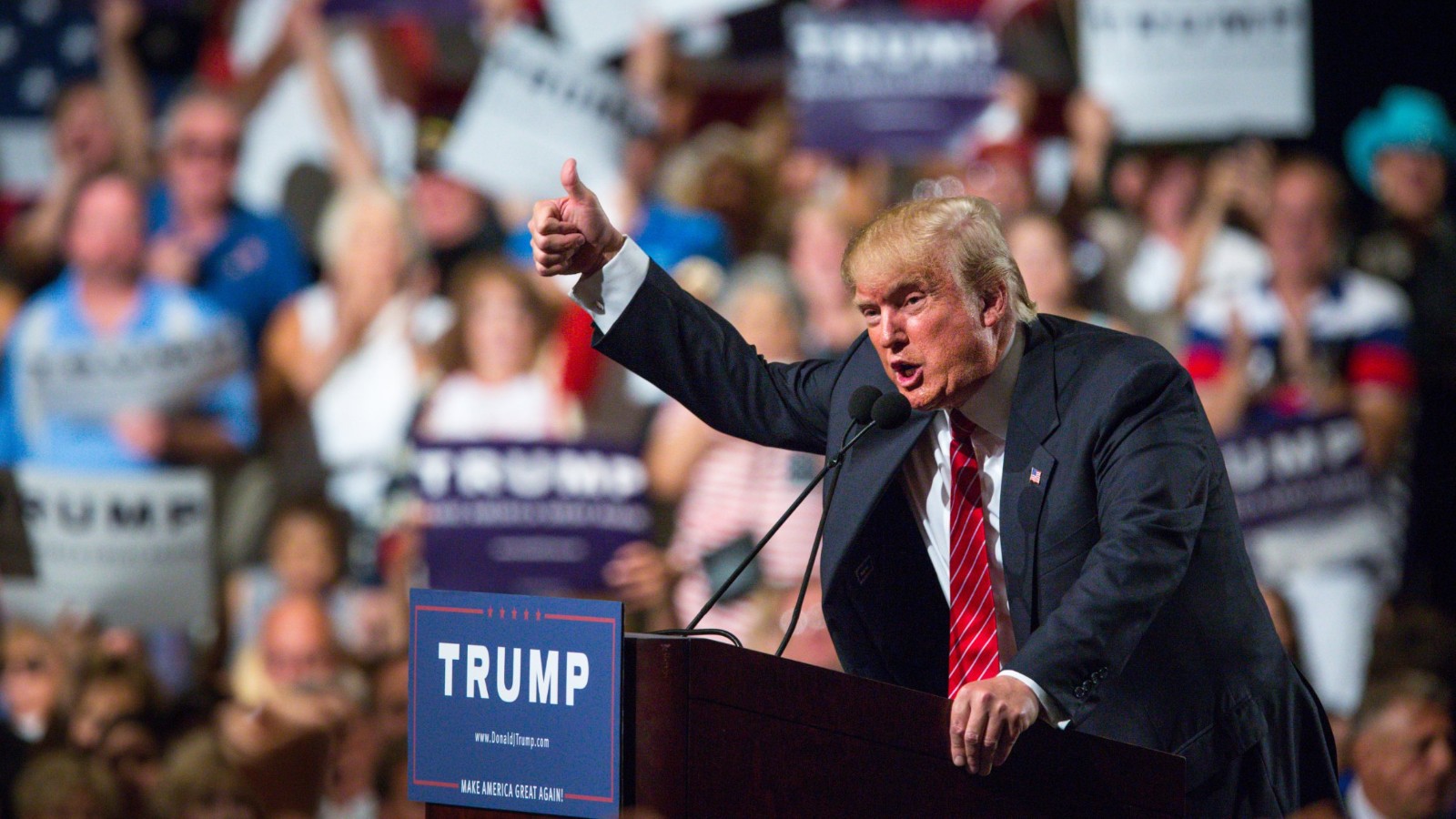Political Impact: Trump Rally
Trump rally – Trump rallies have had a significant impact on the political landscape, energizing his base and shaping political discourse.
The recent Trump rally in Ohio drew a large crowd of supporters, many of whom were eager to hear the former president’s latest remarks. However, the rally was also met with protests from those who oppose Trump’s policies. In a Biden interview , the current president addressed the issue of political division in the country, calling for unity and bipartisanship.
Despite the protests, the Trump rally was a success, with many attendees expressing their support for the former president and his policies.
Trump’s rallies are carefully crafted to appeal to his supporters, featuring a mix of grievance politics, nostalgia, and promises of greatness. He uses these rallies to attack his opponents, promote his agenda, and create a sense of community among his followers.
The Trump rally, held in the wake of the NATO summit in Washington, D.C. , was a testament to the enduring power of his rhetoric. Despite the controversies that have dogged his presidency, Trump’s supporters remain fiercely loyal, drawn to his populist message and his promise to “Make America Great Again.”
Mobilizing Supporters
Trump’s rallies have been instrumental in mobilizing his supporters. By creating a sense of urgency and excitement, he encourages his base to vote and engage in political activism.
For example, during the 2020 election, Trump held numerous rallies in swing states, drawing large crowds and generating enthusiasm among his supporters. This mobilization likely contributed to his strong performance in these states.
Influencing Political Discourse
Trump’s rallies have also had a profound impact on political discourse. His inflammatory rhetoric and attacks on the media and political opponents have polarized the electorate and contributed to a climate of division.
For example, Trump’s repeated claims that the election was “stolen” from him have fueled conspiracy theories and distrust in the electoral process. This has led to increased political violence and threats against election officials.
Media Coverage

The media’s portrayal of Trump rallies has been a subject of much debate. Some have accused the media of being biased against Trump and his supporters, while others have argued that the media is simply reporting on the facts.
There is no doubt that the media’s coverage of Trump rallies has been largely negative. This is due in part to the fact that Trump’s rallies are often characterized by violence and chaos. However, it is also due to the fact that the media is often more interested in reporting on the negative aspects of Trump’s rallies than the positive aspects.
The media’s coverage of Trump rallies has also been criticized for being biased. Some have accused the media of being biased against Trump and his supporters, while others have argued that the media is simply reporting on the facts.
There is no doubt that the media’s coverage of Trump rallies has been influenced by the media’s own political biases. However, it is also important to note that the media is not a monolithic entity. There are a variety of different media outlets, each with its own unique perspective on Trump and his rallies.
The media’s coverage of Trump rallies has also been shaped by the rise of social media. Social media has allowed Trump’s supporters to bypass the traditional media and communicate directly with each other. This has led to the creation of a number of pro-Trump echo chambers, where Trump’s supporters can reinforce their own beliefs and avoid exposure to opposing viewpoints.
Social Media, Trump rally
Social media has played a major role in shaping public opinion about Trump rallies. Trump’s supporters have used social media to organize rallies, spread propaganda, and attack his opponents. Social media has also allowed Trump’s opponents to organize protests and spread their own messages.
The use of social media by Trump’s supporters has been particularly effective in shaping public opinion. Trump’s supporters have used social media to create a sense of community and to spread their message to a wider audience. They have also used social media to attack Trump’s opponents and to spread propaganda.
The use of social media by Trump’s opponents has been less effective in shaping public opinion. Trump’s opponents have used social media to organize protests and to spread their own messages. However, they have been less successful in using social media to reach a wider audience.
The media’s coverage of Trump rallies has been a complex and controversial issue. There is no doubt that the media’s coverage has been influenced by its own political biases. However, it is also important to note that the media is not a monolithic entity. There are a variety of different media outlets, each with its own unique perspective on Trump and his rallies.
Crowd Analysis

Trump rallies attract a diverse crowd, with a mix of demographics and motivations. Attendees are often driven by a sense of economic anxiety, dissatisfaction with the political establishment, and a desire for change.
Trump’s speeches employ powerful rhetoric and symbolism, tapping into themes of nationalism, populism, and anti-establishment sentiment. He uses simple language, repetitive slogans, and appeals to emotions, creating a sense of camaraderie and shared purpose among his supporters.
Emotional Atmosphere and Crowd Dynamics
The atmosphere at Trump rallies is often charged with emotion, characterized by a mix of excitement, enthusiasm, and occasionally hostility. Attendees engage in chants, sing songs, and wave flags, creating a sense of collective identity and belonging.
Trump’s ability to connect with his supporters on a personal level contributes to the emotional atmosphere. He often shares anecdotes, personal experiences, and attacks his opponents, eliciting strong reactions from the crowd.